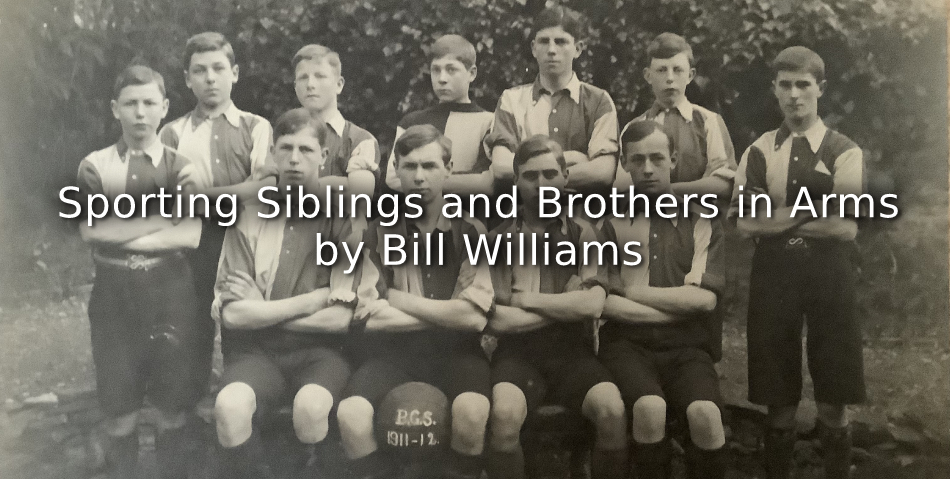This year will mark 100 years since the Hartley brothers from Shipton under Wychwood, in West Oxfordshire, arrived together on the international sporting stage
The elder brother Ernest, was selected to play for England at field hockey, beating Ireland 3-0 in Dublin and the younger, Frank, for the England Amateur football team, also against Ireland, scoring three in a 4-0 victory. Both boys, along with older brothers, Tom, William and Richard, had all attended Burford Grammar School in West Oxfordshire in the early 1900’s; at the time Burford was referred to as an ‘Association Football Nursery’ which the F.A. Museum described as, ‘A place where young players were specifically trained and coached in the skills related to Association Football’. The school also pioneered ‘six-a side football’ and organised a competition involving five teams called, ‘Championship Sixes’ which took place regularly at the school; the Hartley boys all took part. There is evidence that this small- sided form of the game had been played at the school since at least 1892 and was probably an adaptation of ‘Association Rules’, which had been codified in 1863 when the Football Association was formed.
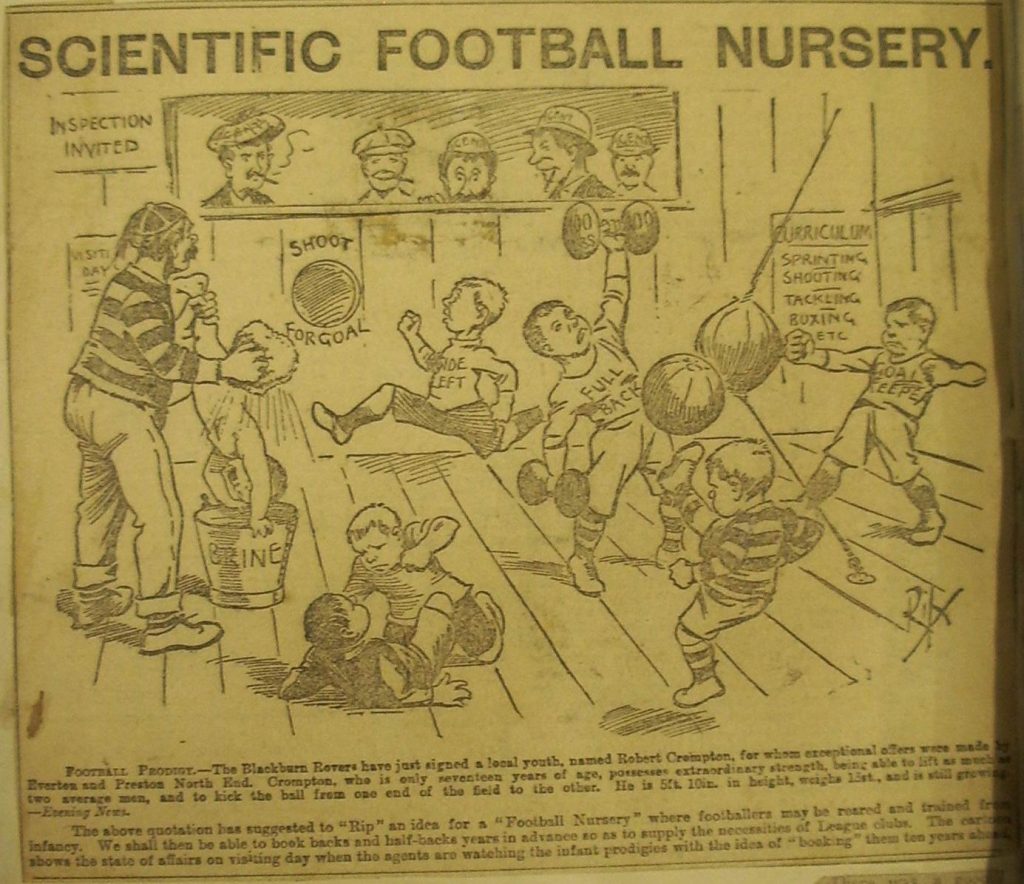
Burford was described as an Association Football Nursery in the early 1900’s
The boys showed great promise as sportsmen in both football and cricket, with Richard and Frank gaining school colours for both sports and Ernest also distinguishing himself on the sports field, particularly as a cricketer. The summer term edition of the school magazine, ‘The Burfordian’ in 1909, described Ernest as a player who, ‘thoroughly understands the art of batting’ after top scoring against Witney Grammar School.
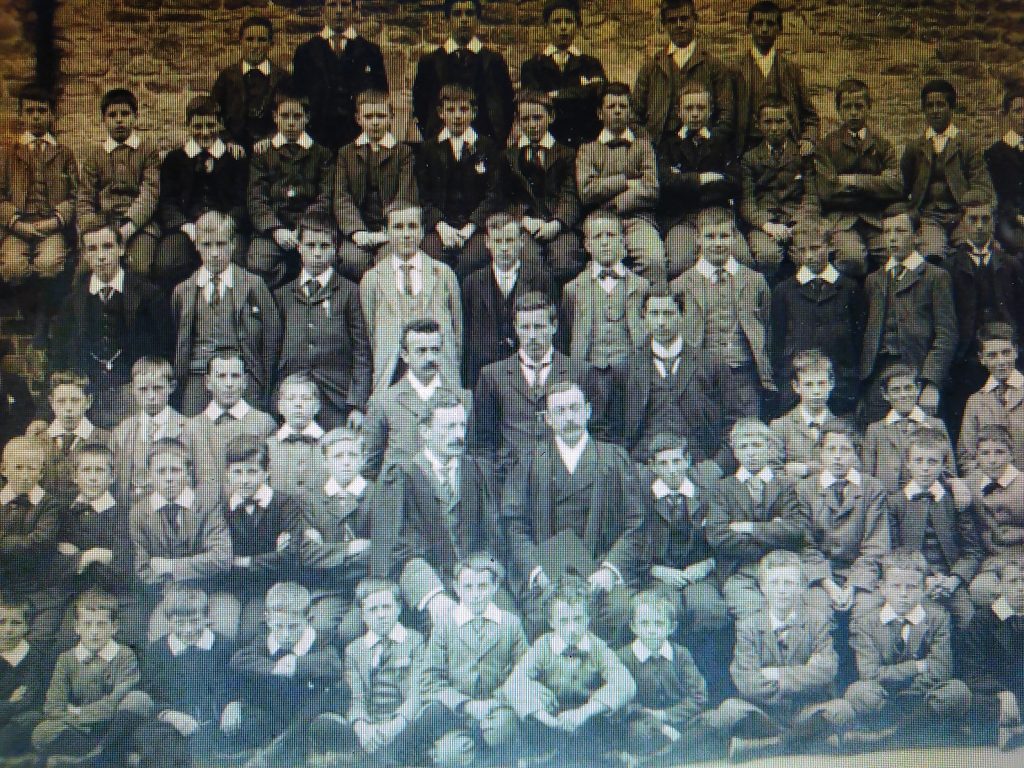
Burford School in 1897 Richard Hartley is in the third row from the top second from the right
By kind permission of Burford School
Frank was also praised for his all-round ability that summer as a ‘most promising bat of the ‘Clem Hill’ order. A useful bowler and a very reliable fielder’. Hill was an Australian test cricketer who played in 49 tests between 1896 and 1912 but with no TV or Radio and little if any cinema news, the editor must have relied solely on newspaper reports of his batting style to make the comparison! Frank’s prowess on the football field was also recognised in the winter of 1910 in a match between The Day Boys and The Boarders, ‘ he is one of the pluckiest members of the team, he has wonderful control of the ball and uses great judgement; his resourcefulness against larger opponents is beyond all praise’! Reported the school magazine.
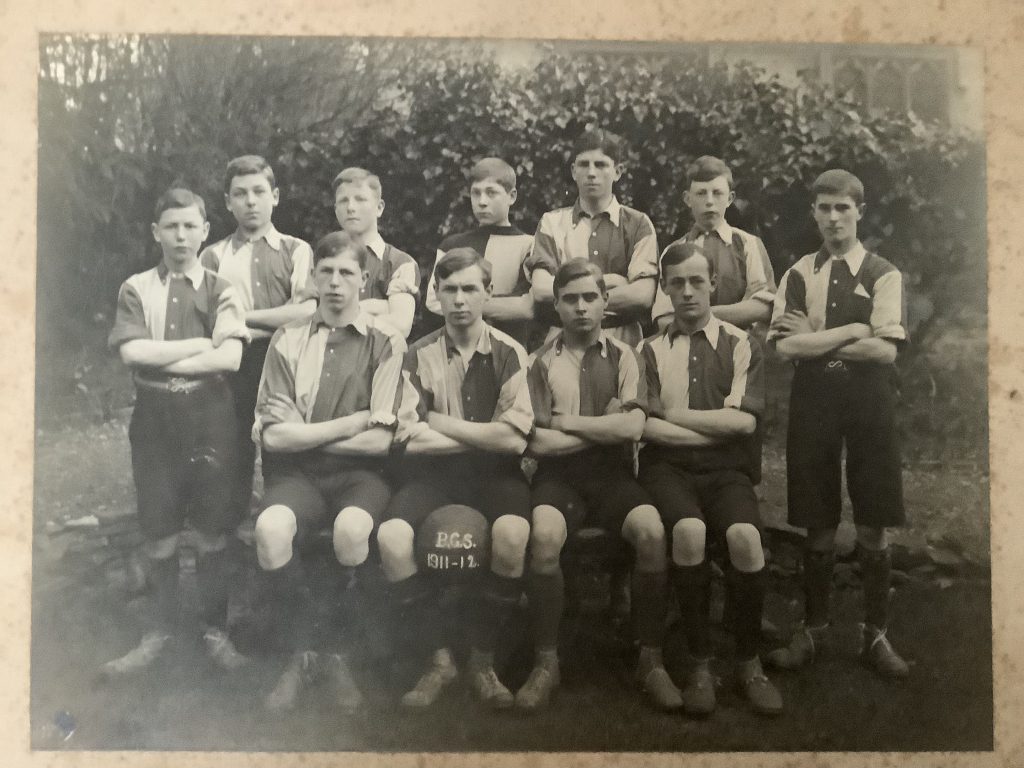
Burford school Football team 1911-12. Frank Hartley standing far left and Ernest Hartley, standing sixth from the left
From the Hartley family collection
William represented the school at Cricket and was described by The Burfordian in 1900 as, ‘ a very successful medium paced bowler keeping a wonderfully good length’ During that season he took an impressive 17 wickets for the school but stopped playing the game when he left school in 1903. Tom also represented the school at Football and Cricket during his time at Burford to complete the set; clearly the school had been the perfect place for the Hartley boys to develop their love of sport. As Burford was a boy’s school at that time (girls would be admitted in 1925), the two sisters of the family Margaret and Elsie, were educated at home, as was the case for many girls growing up in this period.
Burford was a country Grammar School founded by the Burford Corporation led by a local merchant named Simon Wysdom in 1571 and at the turn of the century, had over one hundred boys on its role. The Headmaster Mr H.F Pigot ( who interestingly took over from his brother E.F Pigot who left to lead King Alfred’s Grammar school in Wantage), was a very keen sportsman and often played alongside the boys for the 1st X1 Cricket team, which during the 1893 and 1894 seasons, included a young Gilbert Laird Jessop( hero of the 1902 Oval Test) , who was a trainee teacher at the school, prior to representing Cambridge University, Gloucestershire and England. Richard arrived in the Autumn of 1894 and missed Jessop by a term.
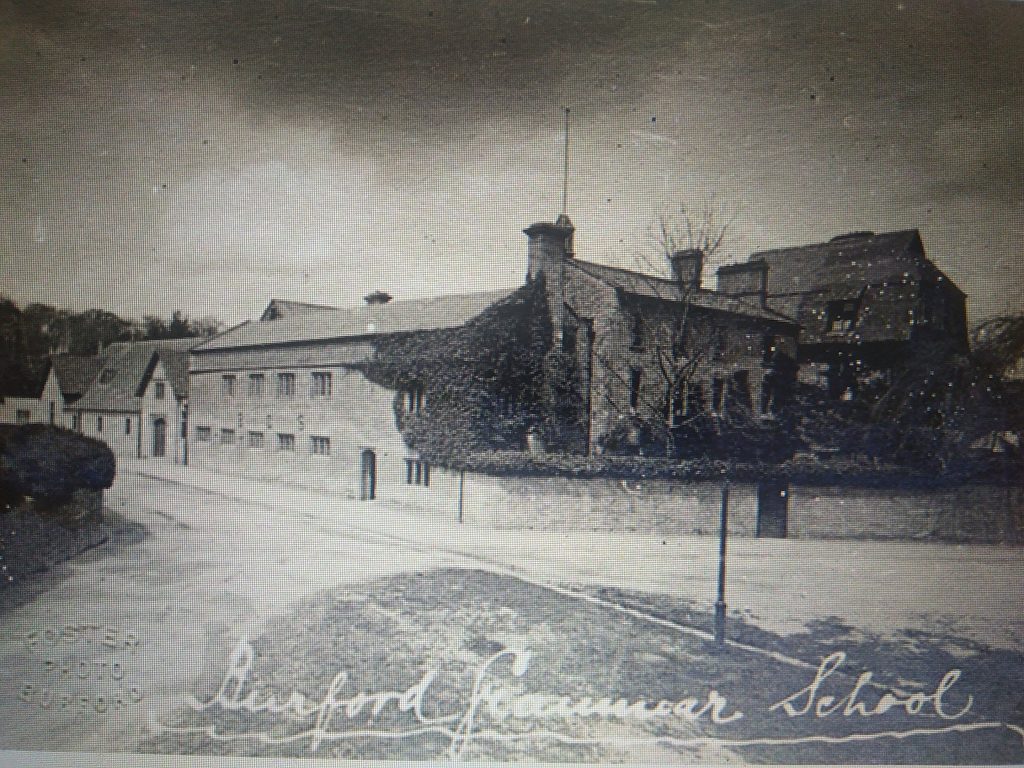
Burford Grammar school in the late 19th Century
By kind permission of The Burford Tolsey and Archive
In a series of reminiscences, written in the early 1970’s, Richard remembered his time at Burford, around the turn of the century. ‘In the playground there was a set of stumps on the wall, and I used to get over before the boarders came out from breakfast and collar the bat. One particular time, I was in for three days until the masters came and took the bat off me’. Also, he quoted the report in ‘The Burfordian’ in his last year in 1900.’ R. Hartley, the best bat the school has had for many years, cuts beautifully, off drives to perfection and has a very strong defence. A useful bowler, rather fast and has played very finely all season, particularly in the recent return match against Wantage Grammar School, where he scored a brilliant 84!’ Clearly, the school thought very highly of him as a cricketer.
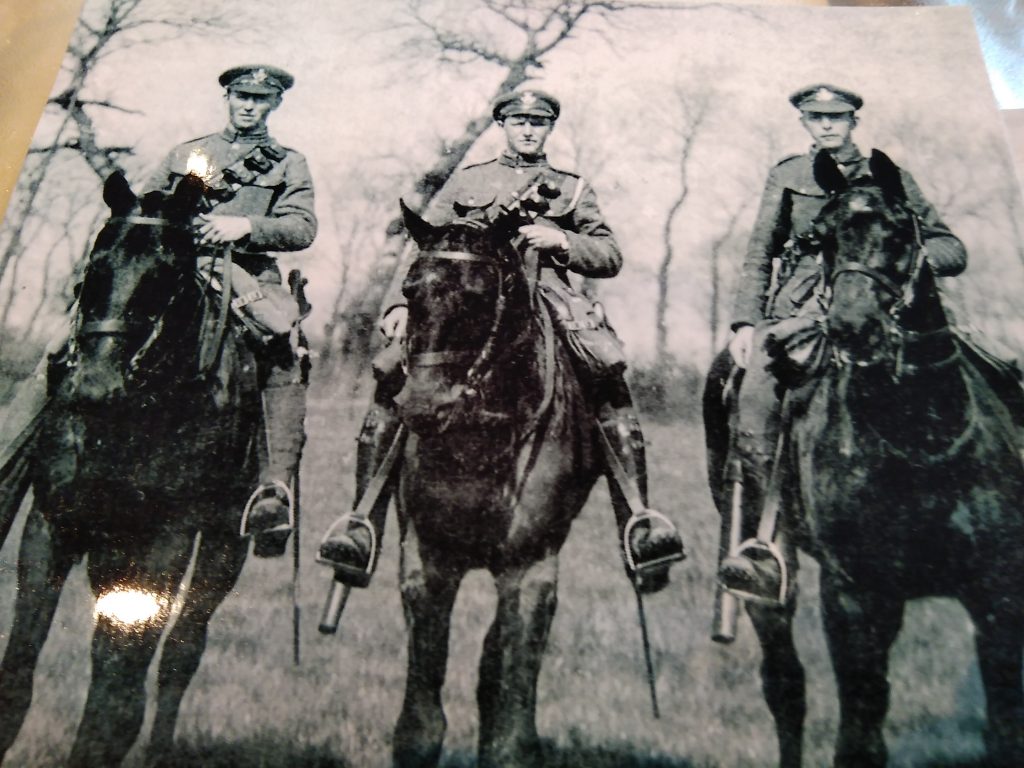
The brothers, on horseback as part of The Oxfordshire Yeomanry in 1914
By kind permission of The Wychwood History Society.
As war broke out in 1914, Tom, Ernest and Frank joined the Army, while William joined the Merchant Navy; Richard stayed at home to run the family farm, which during times of conflict, was a reserved occupation and vital to the war effort. The three brothers joined The Queen’s Own Oxfordshire Hussars, which formed part of The Oxfordshire Yeomanry and by the start of the twentieth century, had reached regimental strength. As a reserve regiment, the Hussars were often granted permission to conduct drills and exercises on the extensive grounds at Blenheim Palace. Thus, as a young boy, Winston Churchill often witnessed the summer cavalry training camps in which he would later take part in as a grown man, rising to the rank of Major and commanding the Henley squadron, the rank he maintained until 1924.
By 1914, the unit formed part of the territorial army and were immediately mobilised on the outbreak of war. The regiment, which included the three Hartley brothers, saw early service in the Autumn of 1914 in the thwarted attempts to save Antwerp and Dunkirk from the German advance and then fell into trench warfare, holding the line at Messines, just south of Ypres. After experiencing a gas attack in the second battle at Ypres in 1915, the unit continued at St Julien and later at Vermelles. On Boxing Day 1916, however, Tom sadly died of an ‘internal haemorrhage’, after a riding event and is buried at Caumont churchyard, in France. Both brothers had lived through such trauma on the battlefields, along with Tom’s death, that they were forever unable to share their experiences with their families. ‘He would now and then speak about the mud on the battlefields and trenches, but nothing else’, recalled Frank’s son John, ‘I think it was just too horrible to discuss’.
Despite the horrors of war, the brothers did find some light relief, playing football for the Brigade team and cricket, as this newspaper article entitled, ‘From somewhere in France’, recorded.’ A cricket match had been organised and the enjoyment the men got was undeniable, as The Gun section made 34 and ‘D’ Squadron 98. However,’, said the article, ‘the most notable contribution of the match was from Trooper Ernest Hartley, who took all 10 wickets for 29 runs’.
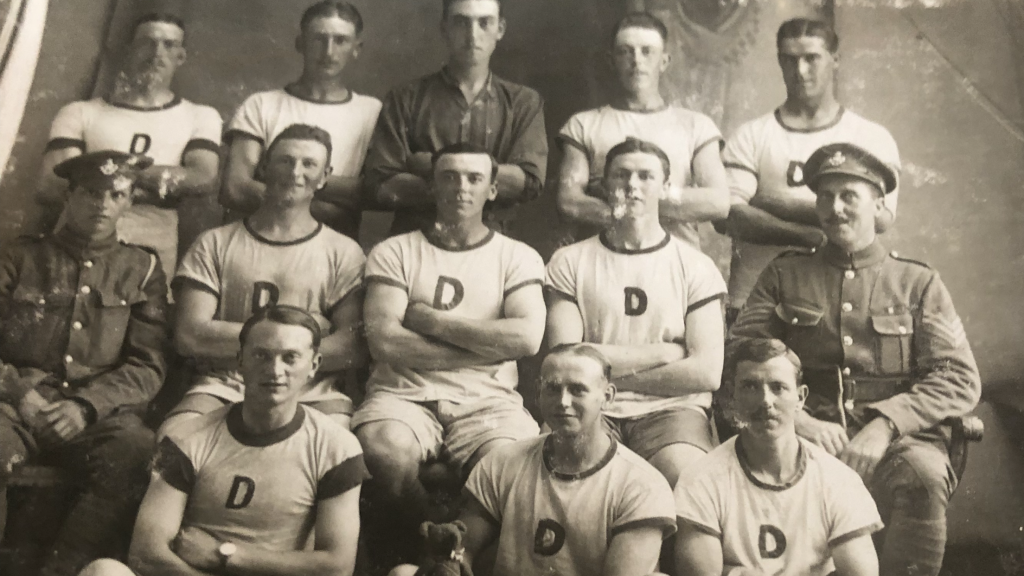
D Squadron Football team Ernest on the back row, fourth from the left
Tom sitting on the middle row, second from the left and Frank fourth from the left
During the war, the brothers were greatly influenced by their Commanding Officer, Major Arthur Child-Villiers. Ernest’s son Terry later remarked that his father had been extremely lucky to have been assigned to this company. ‘Villiers was a remarkable man’, remarked Terry Hartley, ‘his concern for the men lasted a lifetime’. Arthur Villiers was the son of The Earl of Jersey and had been educated at Eton and Oxford before joining the Oxfordshire Hussars in the early 1900’s; he later went on to be a Director at Bearing’s Bank.
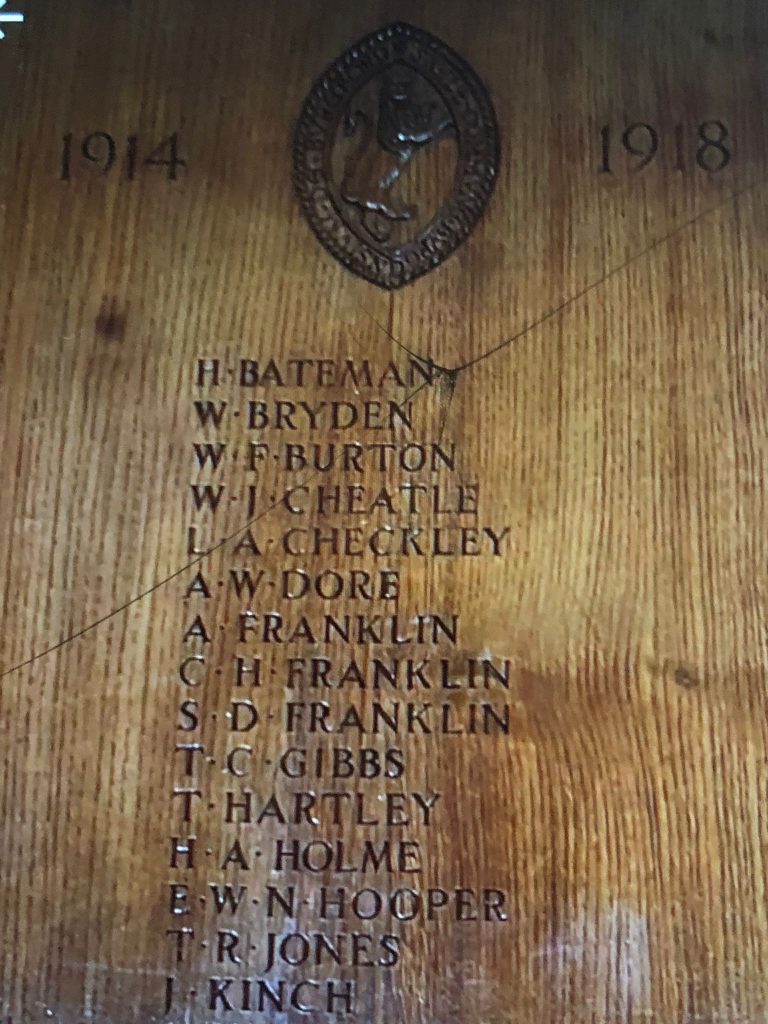
Thomas Hartley’s death remembered by Burford School
By kind permission of Burford school
So, when the war ended in 1918, Villiers invited Ernest and Frank to work for him at The Eton Manor Boys Club in Hackney Wick. Founded in 1909 and run by four Old Etonians, one of which was Villiers, the club provided first class sports and social facilities for boys aged 14-18. The club boasts many former members who became international sportsmen, including the 1920 and 1924, Double Olympic Champion Middleweight Boxer, Harry Malin and the 1954 Commonwealth Games Welterweight Champion, Nicky Gargano. The boys also received expert coaching from such sporting icons as Douglas Jardine (England cricket captain 1931-34) and Alf Ramsay (English Football’s World Cup winning Manager). The club also catered for Drama, Debating and First Aid, but the brothers focused primarily on Football and Cricket.
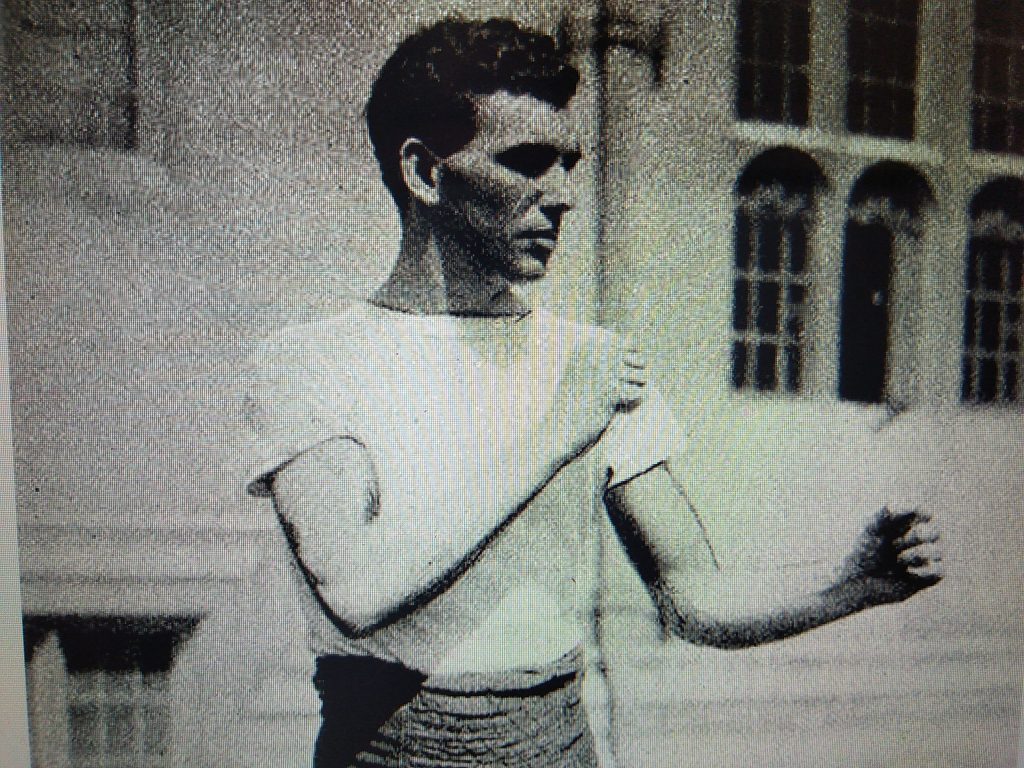
The double Olympic Gold medalist, Harry Malin, a product of Eton Manor Boys Club
Frank wanted to pursue a career in Football and signed for Oxford City in 1921 and then Tottenham Hotspur as an amateur in 1922. It was during this period that he was selected for England at Amateur level and played 7 times scoring 8 goals, before gaining his only’ FULL’ cap for England, in a 4-1 victory over France in 1923.
International ‘caps’ for Football were first introduced in England in 1866, by N.L. Jackson founder of the ‘famous Corinthian Club’, which Frank guested for between 1920 and 1928, scoring 59 goals in 87 appearances, which included five hat-tricks! Frank was a ‘Corinthian rarity’, in that he did not come to the club via the traditional Oxbridge supply chain. Set up in 1892, the club is credited with having popularised football around the world, having promoted sportsmanship and fair play and having championed the ideas of amateurism. Many players, like Frank, played for the club while playing for another primary club. Famous players included the Edwardian Sporting greats, England Cricketer, C.B. Fry and G.O. Smith, the England Football striker.
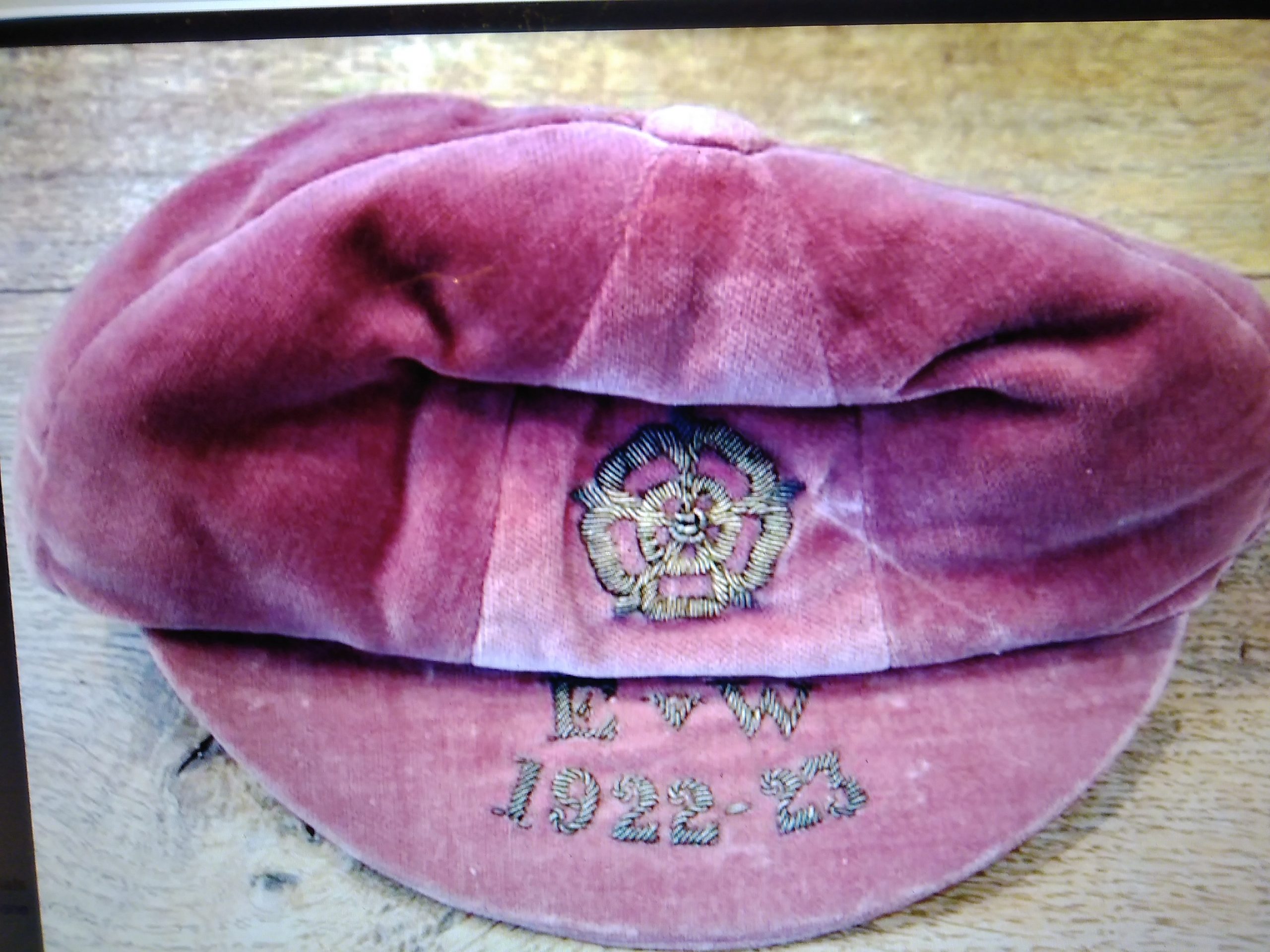
- One of Frank’s Amateur caps from 1922-23 Season
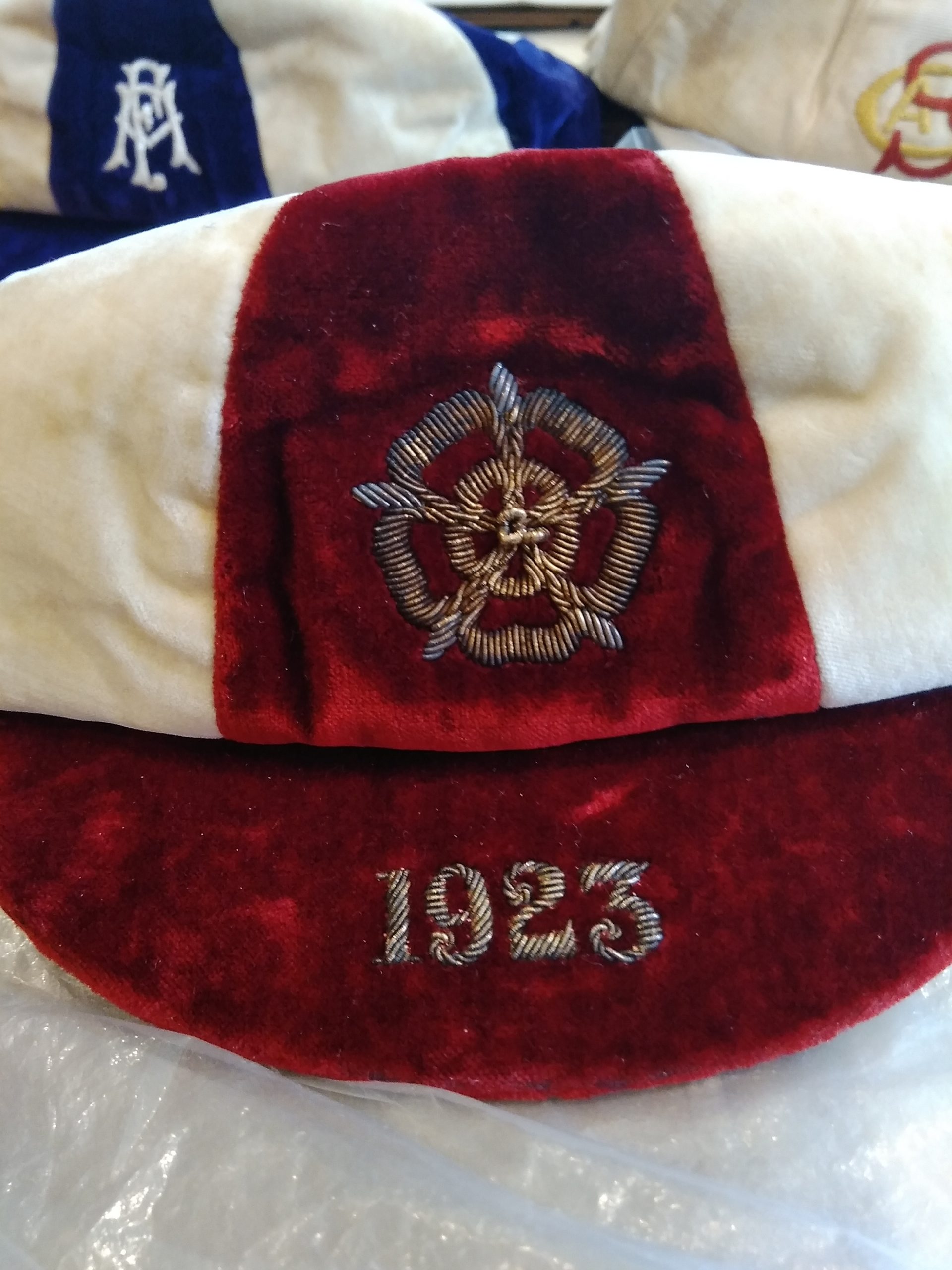
- Frank’s FULL cap with tudor rose. The three lions and ten tudor rose badge with tassle, that we see today, was introduced in 1949. Full caps had two colours back then depending upon the opposition
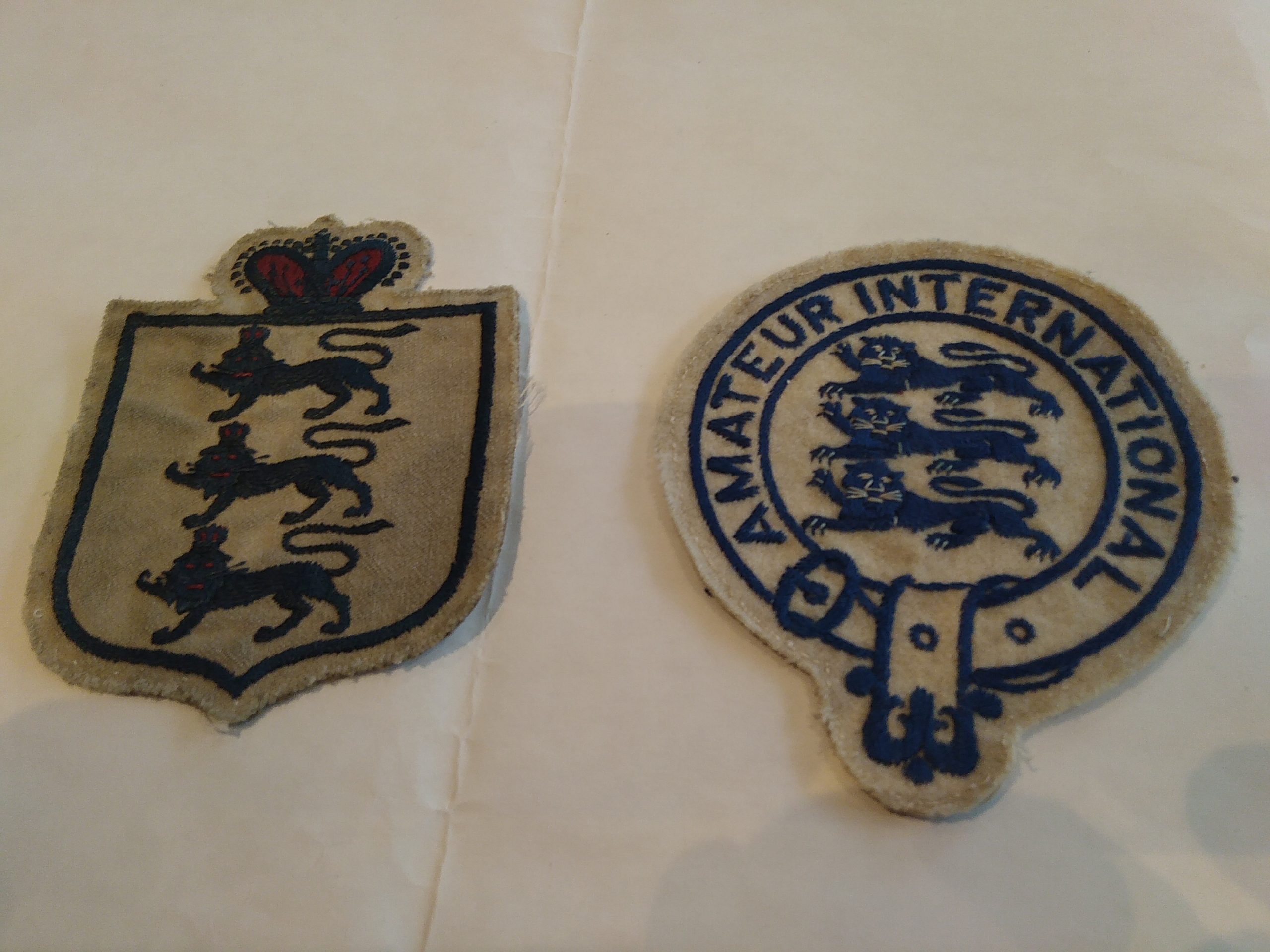
- Two shirt badges belonging to Frank Hartley. Players were expected to sew on the badges themselves. Full international on the left, Amateur on the right. From the Hartley Family Collection
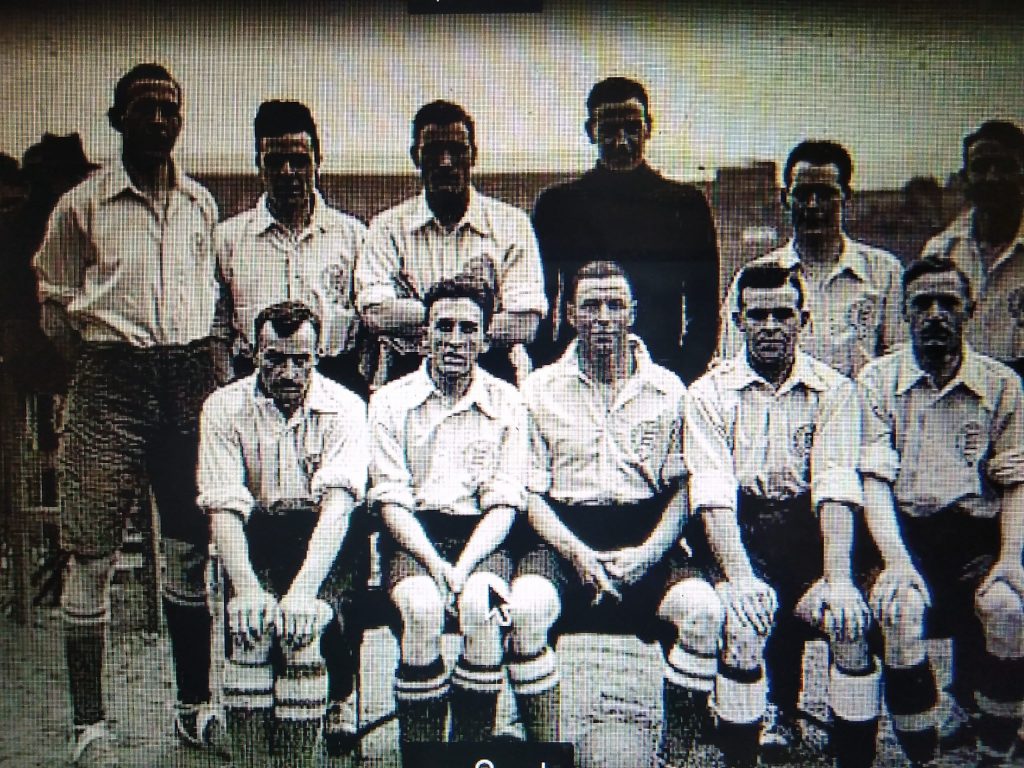
Frank in the centre in 1923 England Amateurs v Wales from HFC
To the annoyance of the Corinthians, Frank became one of the first players from the club to sign professionally, joining Tottenham on £6 per week (the average weekly wage for a working man in 1928 was less than £1) staying with the club until 1931; being a professional now prevented him from playing for the famous club. Frank was also a South of England Hockey trialist, County Hockey player and a county cricketer, winning the Minor Counties Championship in 1929. Oxfordshire was one of the founder members of The Minor Counties Cricket Association, when it began in 1895 and 1929 was the first time the county had won the competition.
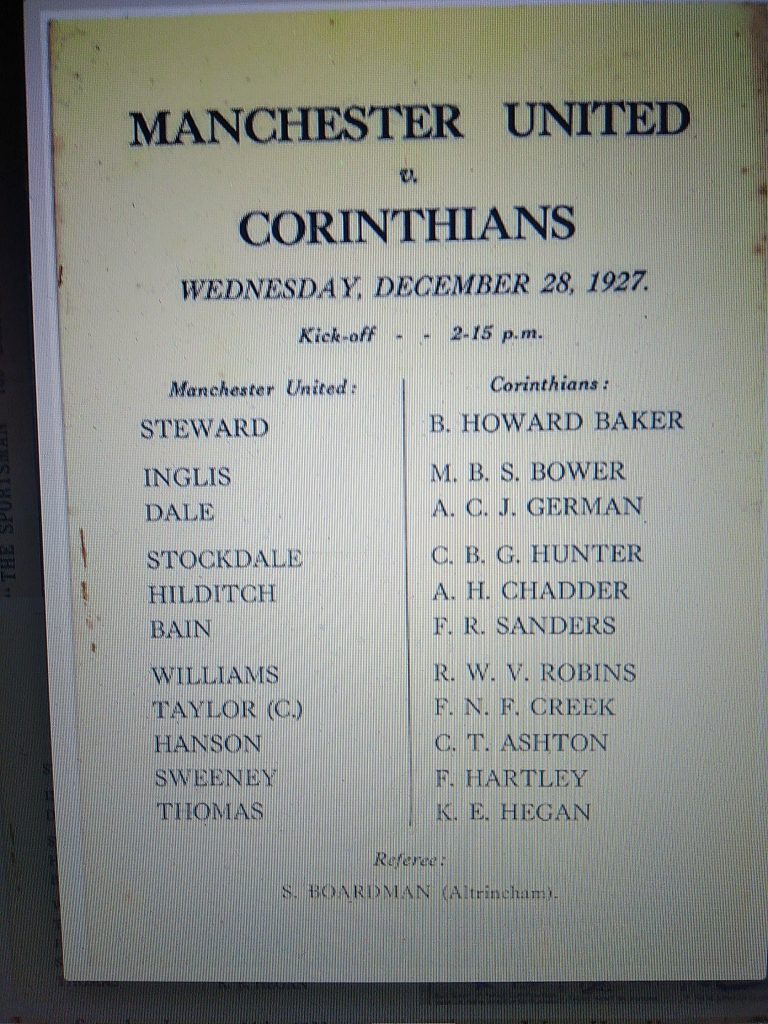
Corinthians v Man Utd Team sheets including Frank 1927
From Author’s collection
Ernest played for his local club Wychwood and later for The Isis Club in Oxford, before the war. Then, during his time in the Army, he played for the regiment at quite a high standard, while stationed in Ireland, which was when he developed into a potential England international. In 1922, he was duly selected for the first of seventeen games for the National team, subsequently captaining the team on three occasions, which he saw as a great honour. Ernest was featured in the 1924 edition of ‘Hockey World’, but despite his success in the sport, he never received a ‘cap’.
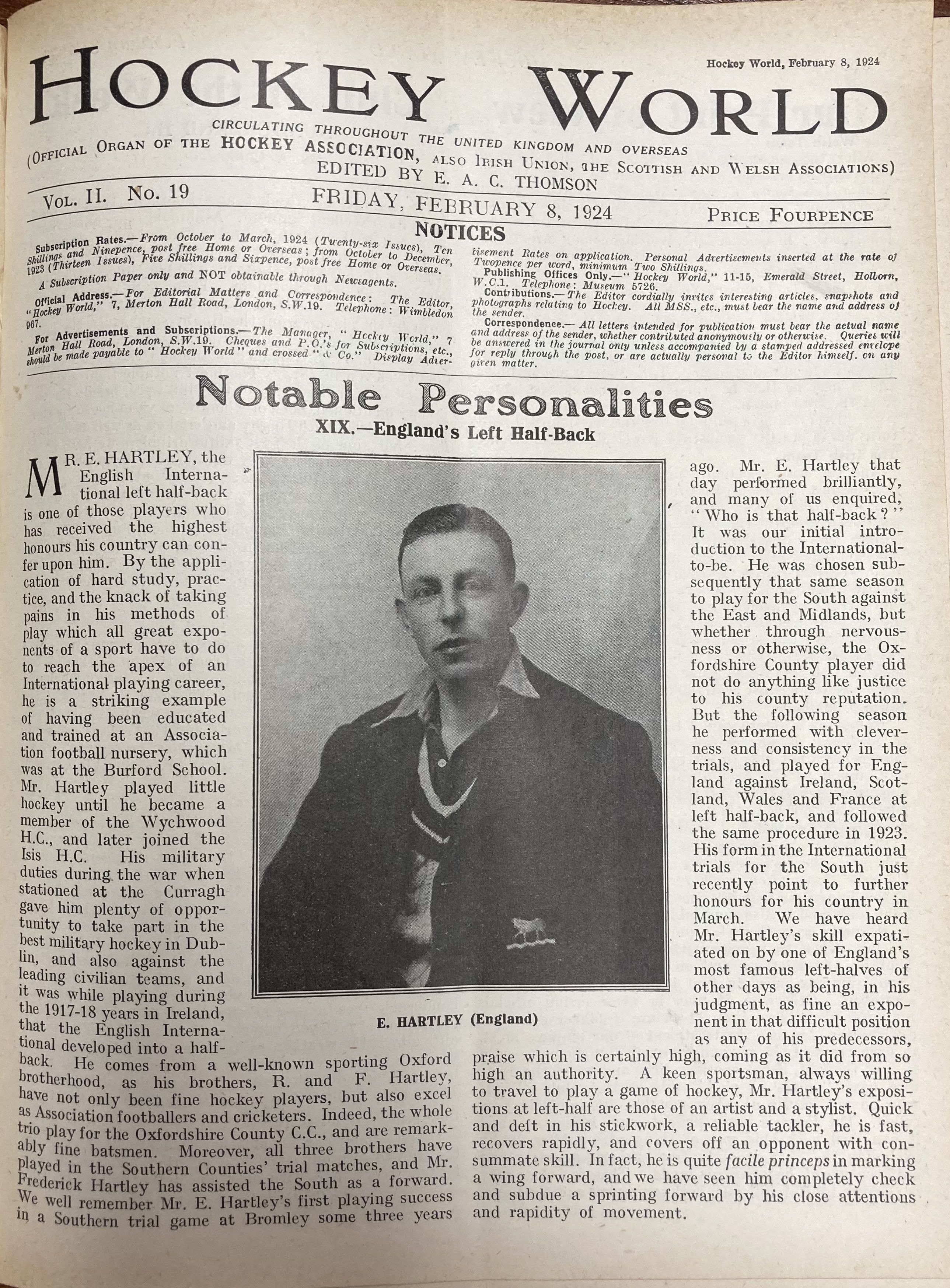
Ernest featured in Hockey World 1924
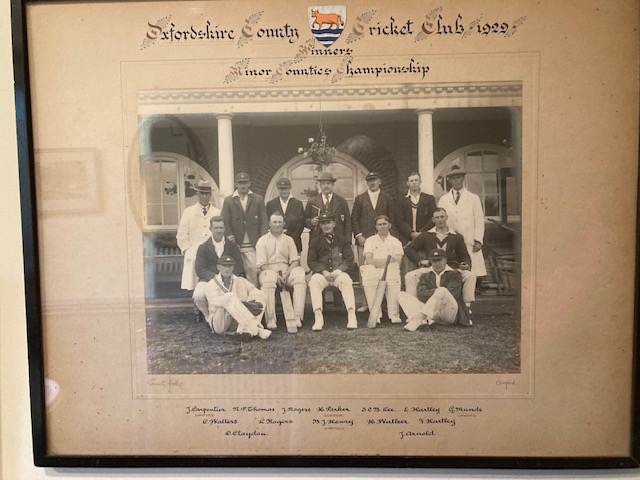
The Oxfordshire Minor Counties Champions 1929.
Ernest standing far right next to the umpire and Frank sitting in front of him
From Hartley Family Collection
Since the inception of The Hockey Association (H.A.) in 1866, the awarding of ‘caps’ was seen as being, ‘against the ethos of an amateur sport where the playing was reward itself’. However, there has recently been a move instigated by The Hockey Museum in Woking, to rectify this; their quest is to identify, firstly former Great Britain players (Anthony (Tony) Nunn, for example received his cap in 2019 and was believed to be the last surviving player from the 1952 Helsinki Olympic Bronze medal winning team), followed by those who, like Ernest, represented England. In 1986, the then president of The Hockey Association Phil Appleyard, did personally present caps to members of that year’s World Cup squad, but that was not officially recognised by The H.A. which means that the caps presented to past players, will be the first distributed under the auspices of the National Governing body, in the 127-year history of The Association. Alongside this, The Football Association has revealed that England’s first official Women’s team are to be recognised with bespoke caps in November 2022 to mark the 50th anniversary of the match against Scotland in 1972!
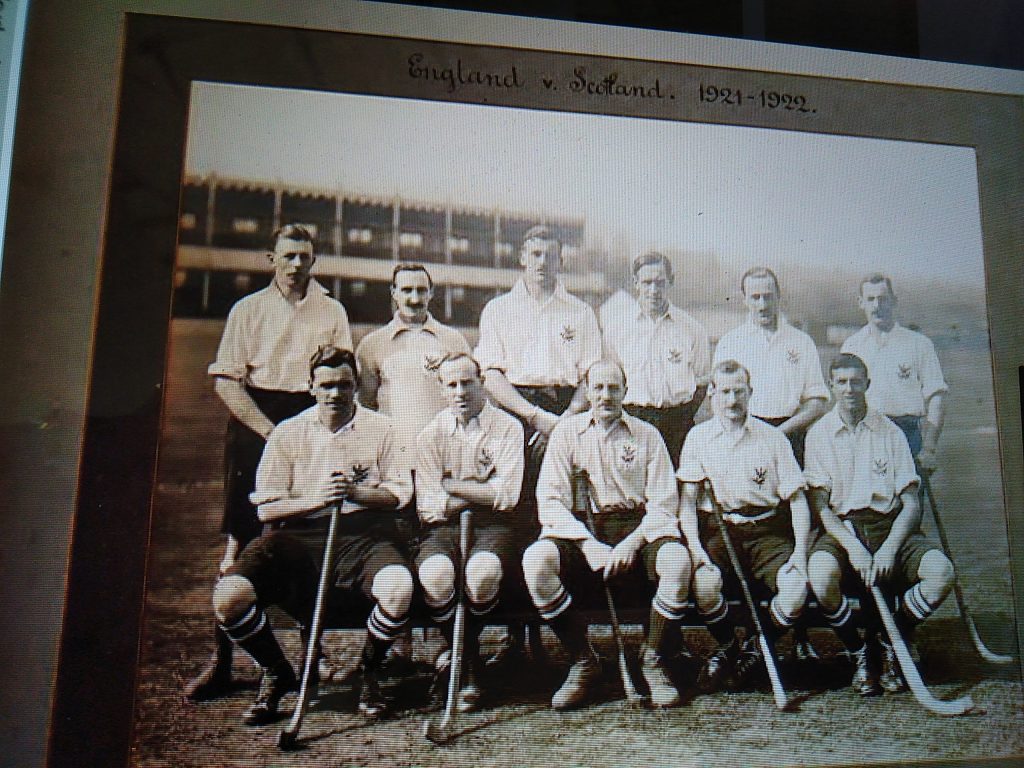
England v Scotland Hockey 1922
Ernest standing far left
From the Hartley Family Collection
Ernest also represented Oxfordshire at Hockey and Cricket and was alongside his brother Frank in the Championship winning team in 1929. Older brother Richard, meanwhile, also an extremely accomplished sportsman (in 1912 he ‘averaged’ 63 scoring six centuries during the season), played sport while running the family farm. In 1905 he played at Lord’s for the County against the MCC, ‘ I remember going up on the train saying that I should like to score 50 at Lord’s’, reminisced Richard years later. He scored 67! During his long career, he encountered many great players; he reputedly played against W.G. Grace at Witney, in Oxfordshire and later the future England players, Jack Hobbs and Percy Chapman.
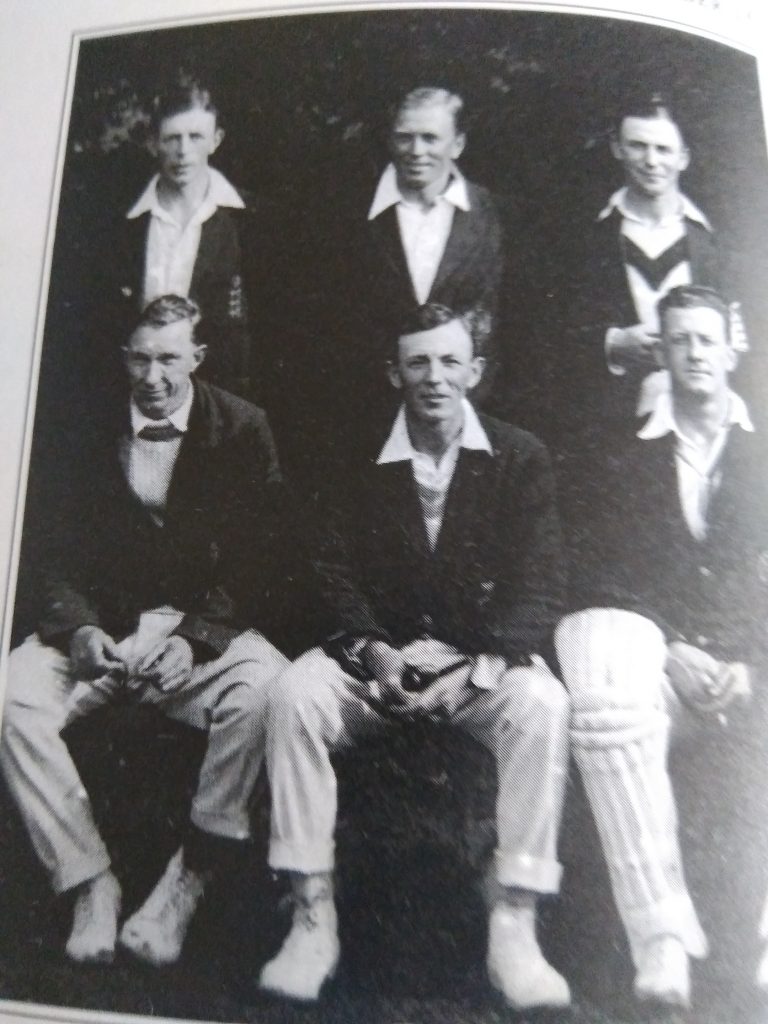
The three Hartley brothers playing for Oxfordshire in 1923
Ernest back left standing, Frank back right and Richard in the middle at the front sitting
Alongside his younger brothers, he also represented Oxfordshire at Hockey, ‘I played several times for ‘The South’, but never managed to get an England cap’, recalled Richard, known to the family as, ‘Dick’ or ‘The Guv’nor’. He also captained Oxfordshire at Cricket, with both younger brothers in the team against Berkshire at Shipton in 1922, where future England captain Chapman, playing for Berks, scored 167 and took 6-38.
Sisters, Margaret Rose and Elsie Mary were also keen sportswomen and played cricket for the ladies’ team at Shipton in the early 1920’s, but did not have the opportunities their brothers had to pursue sport further. The entry into sports such as cricket unfortunately, did not mean that they had achieved some form of acceptance in the male dominated world they were living in. Despite some minor acceptance in some sports, the belief that women did not belong in sport was widespread at this time.
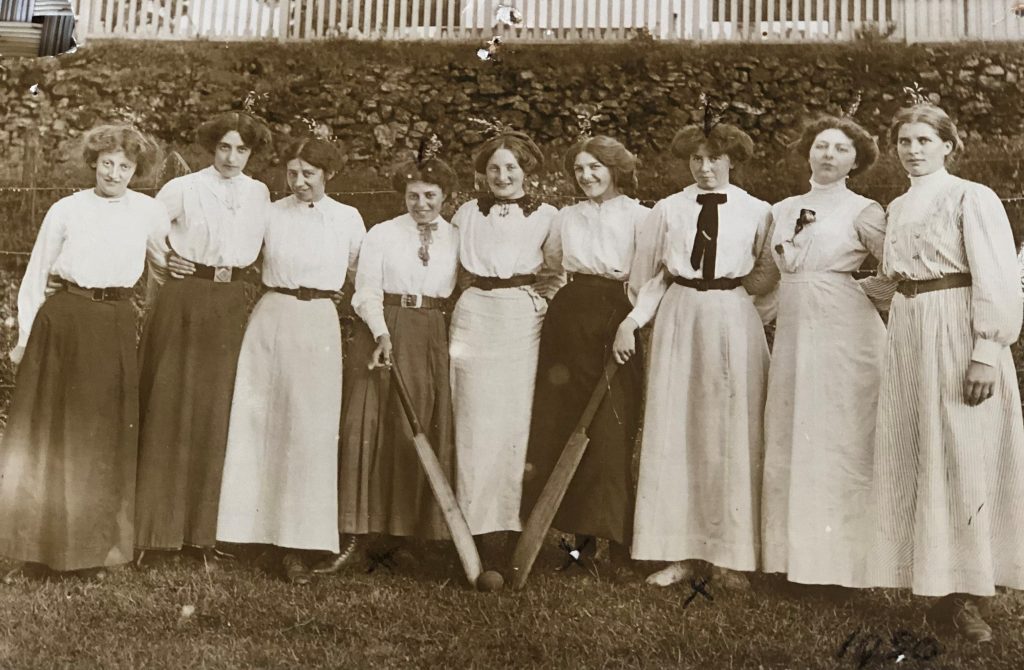
Shipton Ladies Cricket team in 1920, which includes the Hartley sisters, Elsie Mary and Margaret Rose
From the Hartley Family Collection
Margaret married Ken Strong, a local publican and farmer and had a son Deryck, who being true to his family heritage, played cricket, rugby , football and hockey. When Ken retired, they moved to Milton under Wychwood, where Margaret died in 1974 at the age of 82. Elsie stayed at home to look after her mother and died in 1979 aged 91. Brother William, never recovered from his experiences during the war and died aged 46! Richard’s son, also named Richard, (as was tradition for the oldest son) learned to fly and at the outbreak of World War two, was posted for special training at the US Navy base in Pensacola, Florida. On returning, he was posted by the RAF to coastal command flying Wellington bombers throughout the war years.
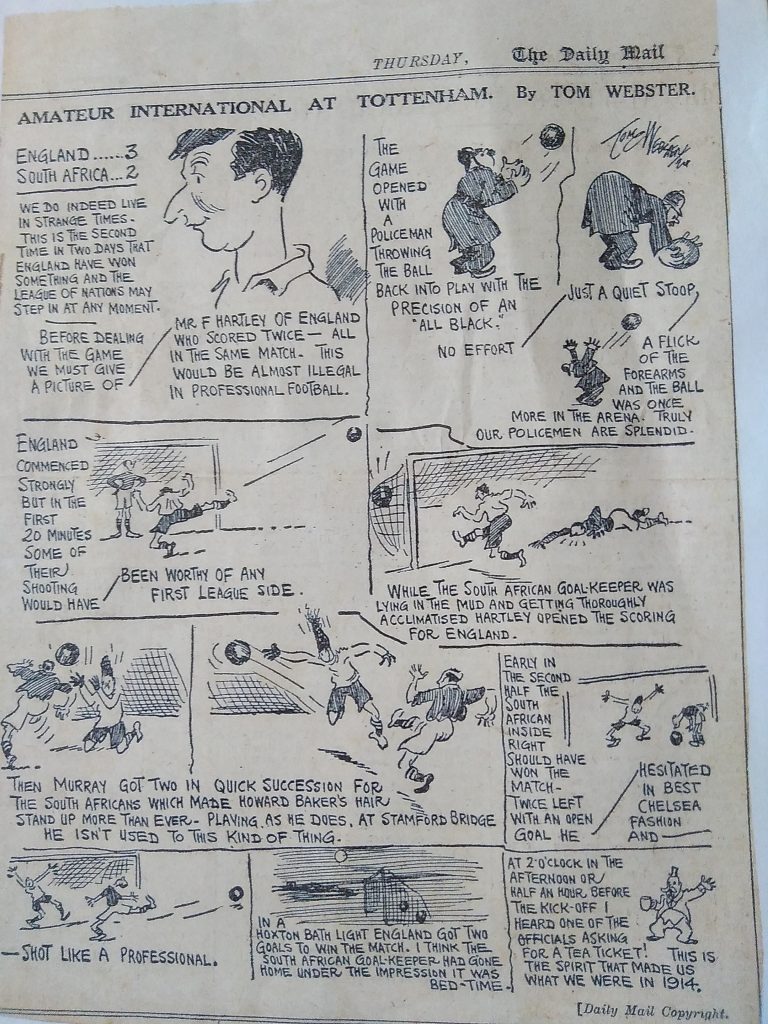
Daily mail cartoon featuring Frank Hartley from the 1924 Amateur International v South Africa
England won 3-2- Frank scoring two
As war broke out for a second time, Arthur Villiers encouraged Ernest and Frank to return to Oxfordshire to resume their farming careers. Frank and family moved back to West Oxfordshire, taking over a farm and continued to play Cricket for his local club, Shipton (twice winners of the National Village Knockout in 2002 and 2003), captaining the 1st XI between 1946 and 1949 and continuing to play until the early 1950’s; he died in 1965 at the age of 69.
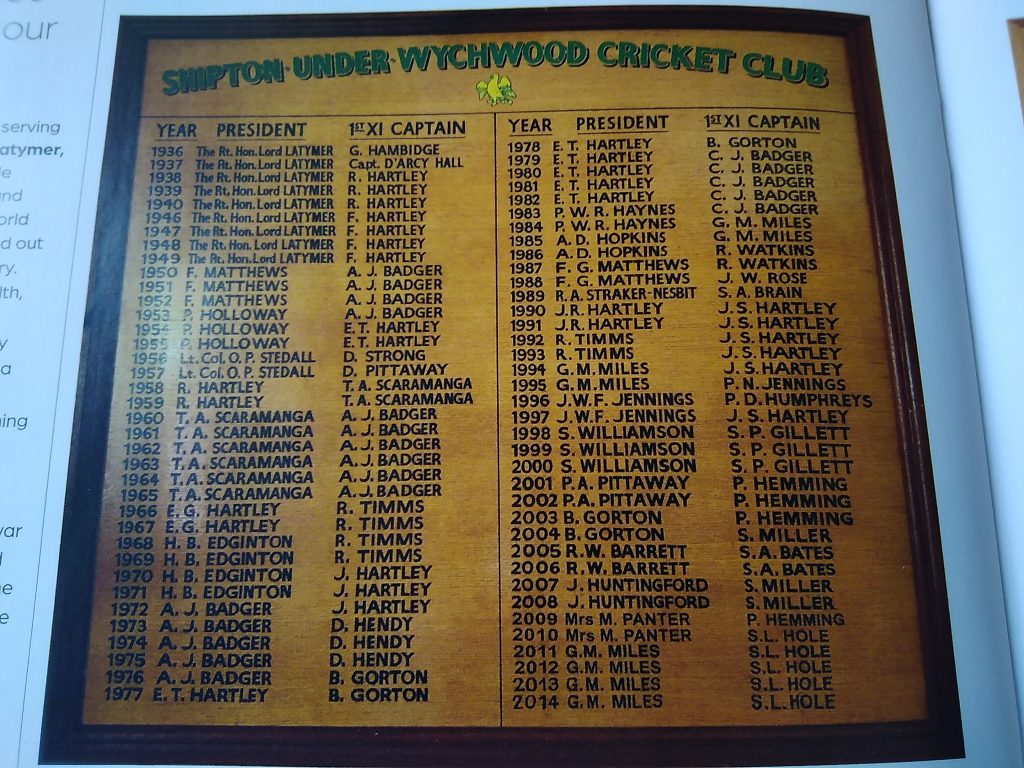
Shipton CC Honours Board by Kind permission of Shipton Cricket Club
Frank’s son John, continued the cricket legacy, playing for Oxfordshire and captaining Shipton in the early 70’s. Ernest also moved back to The Wychwoods, taking over another local farm in the area. Likewise, he continued to play for Shipton up to the late 1940’s and was President of the club in the late 60’s; he died in 1969 at the age of 74. His son Terry was club president at Shipton between 1979 and 1982. Richard continued his involvement in sport and was a regular for the Shipton team over a twenty-year period, captaining the 1stX1 between 1938 and 1940, playing up until 1948 at the age of 65, scoring 74 in his final match! After he stopped playing, he often brought local cricket teams together for charity matches at Shipton and in 1961 he was elected the first ‘Honorary Life Member’ of the club for his service over many years. He died in 1977, aged 93!
The family were back where it all began.
Article © Bill Williams
Sporting Siblings and Brothers in Arms
